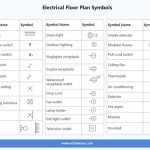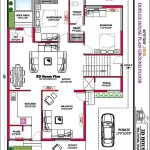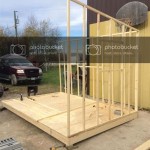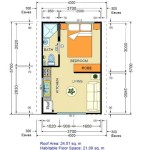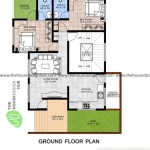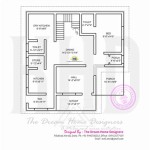Small Open Concept Floor Plans: Maximizing Space and Functionality
Small open concept floor plans are increasingly popular in modern residential design. This layout style involves minimal walls separating the main living areas, such as the kitchen, living room, and dining room, creating a more unified and spacious environment, even within a compact footprint. While the concept offers numerous advantages, careful planning and design considerations are crucial to achieving a functional and aesthetically pleasing outcome. Factors such as zoning, traffic flow, storage solutions, and visual cohesion play a significant role in the success of a small open concept space. This article explores key aspects of designing and implementing small open concept floor plans, focusing on strategies to optimize space, enhance functionality, and create a comfortable living environment.
The allure of open concept living stems from its ability to create a sense of expansiveness, even in smaller homes or apartments. Breaking down walls and merging distinct spaces allows for increased natural light penetration, improved airflow, and enhanced social interaction. This design approach can be particularly beneficial in older homes where interior walls may have created a series of small, isolated rooms. By strategically removing or reconfiguring these walls, homeowners can transform a cramped layout into a bright, airy, and inviting living space. However, it is essential to recognize that open concept living is not a one-size-fits-all solution. Careful consideration must be given to the specific needs of the occupants, the existing architectural features of the building, and the overall desired aesthetic.
Successfully implementing a small open concept floor plan requires a holistic approach that addresses both the functional and aesthetic aspects of the design. Strategic space planning is paramount, ensuring that each area within the open space serves a specific purpose and contributes to the overall flow of the layout. Attention to detail, from furniture selection to color palettes, is equally important in creating a cohesive and harmonious living environment.
Defining Zones Within the Open Space
One of the primary challenges in designing an open concept floor plan is delineating distinct zones for different activities without physically separating them with walls. Functional zoning is crucial for maintaining order and preventing the space from feeling chaotic or undefined. Several techniques can be employed to visually and functionally distinguish different areas within the open plan.
Furniture Placement: The strategic placement of furniture is a highly effective method for defining zones. For instance, a large sectional sofa can act as a natural barrier between the living room and dining room. An island or peninsula in the kitchen can serve as a visual and functional divider from the living area. Area rugs can also be used to anchor specific zones, such as the living room seating area or the dining table, creating a sense of enclosure within the larger space. Varying furniture heights can contribute to visual interest and zone definition. For example, taller bookshelves or cabinets can subtly separate a living area from a workspace.
Changes in Flooring: A change in flooring material can also define different zones. For example, hardwood flooring might be used in the living and dining areas, while tile flooring is used in the kitchen. This subtle shift in texture and color can visually separate the spaces without the need for physical barriers. The transition should be seamless and intentional to avoid creating a jarring effect. Consider the durability and maintenance requirements of each flooring material when making your selection.
Lighting Strategies: Lighting plays a vital role in defining zones and creating ambiance. Different types of lighting can be used to highlight specific areas and activities. For example, pendant lights can be hung over a kitchen island or dining table to create a focal point and define the dining area. Recessed lighting can provide general illumination in the living room, while task lighting can be used in the kitchen for food preparation. Dimmers allow for adjusting the lighting levels to create different moods and enhance the functionality of each zone.
Subtle Architectural Elements: While the goal is to avoid walls, subtle architectural elements can be used to define zones without completely closing them off. A partial wall, a decorative screen, or a series of columns can provide visual separation while maintaining an open feel. These elements can also add architectural interest and character to the space.
Optimizing Storage in Small Open Concept Spaces
Storage is a critical consideration in any small space, but it is particularly important in open concept layouts. Lack of adequate storage can quickly lead to clutter, making the space feel cramped and disorganized. Integrating storage solutions seamlessly into the design is essential for maintaining a clean and functional living environment.
Built-in Storage: Built-in storage solutions are an excellent way to maximize space and minimize visual clutter. Custom cabinets, shelves, and drawers can be designed to fit perfectly into the available space and provide ample storage for various items. Consider incorporating built-in storage around windows, under stairs, or along walls to make the most of every available inch. Designing these elements to match the overall aesthetic of the space creates a cohesive and harmonious look. For instance, a built-in bookshelf can seamlessly blend into the living room décor, providing both storage and visual interest.
Multifunctional Furniture: Choosing furniture pieces that serve multiple purposes can significantly increase storage capacity without taking up additional floor space. Ottomans with hidden storage compartments, coffee tables with drawers, and sofas with built-in storage under the cushions are just a few examples of multifunctional furniture that can help keep the space organized. Select pieces that are proportional to the size of the room to avoid overwhelming the space.
Vertical Storage: Utilizing vertical space is crucial in small open concept floor plans. Tall bookshelves, wall-mounted cabinets, and open shelving can provide ample storage without taking up valuable floor space. Consider using the space above doorways or windows for storage, as these areas are often overlooked. Be mindful of the accessibility of items stored on higher shelves. Use attractive storage containers and baskets to keep items organized and visually appealing.
Hidden Storage: Incorporating hidden storage solutions is a clever way to conceal clutter and maintain a minimalist aesthetic. Consider using pull-out drawers in kitchen cabinets, under-bed storage containers, or hidden compartments in furniture pieces to keep items out of sight. Designing a storage bench with a lift-up seat provides a practical and attractive storage solution for entryway items or living room accessories. Remember to clearly label storage containers to easily locate items when needed.
Creating Visual Cohesion and Harmony
While defining distinct zones is important, it is equally crucial to maintain visual cohesion and harmony throughout the open concept space. This involves carefully selecting color palettes, materials, and design elements that complement each other and create a unified aesthetic. A cohesive design will prevent the space from feeling disjointed or chaotic.
Color Palette: Choosing a consistent color palette is essential for creating a sense of harmony in an open concept space. Select a limited number of colors that complement each other and use them throughout the different zones. Neutral colors, such as whites, creams, and grays, can provide a unifying backdrop, while accent colors can be used to add pops of interest and define specific areas. Consider using the same accent color in different zones to create a visual connection between them. Varying the shades and tones of the chosen colors can add depth and dimension to the space.
Material Consistency: Maintaining consistency in materials, such as flooring, countertops, and cabinetry, can also contribute to visual cohesion. For example, using the same type of wood for the kitchen cabinets and the living room furniture can create a sense of continuity. Repeating materials throughout the space will help tie the different zones together. However, avoid being too matchy-matchy, as this can make the space feel sterile and uninspired. Introduce different textures and finishes to add visual interest and prevent the space from feeling monotonous.
Consistent Design Style: Adhering to a consistent design style, such as modern, traditional, or minimalist, is crucial for creating a cohesive and harmonious open concept space. Choose furniture, accessories, and decorative elements that align with the chosen style. Mixing design styles can be challenging and can easily result in a cluttered or disjointed look. If you choose to incorporate elements from different styles, do so sparingly and intentionally. Ensure that the different styles complement each other and create a balanced and harmonious aesthetic.
Repeating Shapes and Patterns: Repeating shapes and patterns throughout the space can also contribute to visual cohesion. For example, using the same geometric pattern in the area rug, throw pillows, and artwork can create a sense of unity. Repeating shapes, such as circles or squares, in the furniture and accessories can also enhance the visual harmony of the space. Be mindful not to overdo the repetition, as this can become overwhelming and detract from the overall aesthetic. Use repetition strategically to create a subtle sense of connection between the different zones.
In conclusion, designing a successful small open concept floor plan requires careful planning, attention to detail, and a holistic approach that considers both the functional and aesthetic aspects of the design. By defining zones, optimizing storage, and creating visual cohesion, homeowners can transform a small space into a comfortable, functional, and aesthetically pleasing living environment. Careful consideration of these factors will contribute to a space that feels larger, brighter, and more inviting.

10 Small House Plans With Open Floor Blog Homeplans Com

10 Small House Plans With Open Floor Blog Homeplans Com

Open Plan 2 Y House Plans Den Sunroom As I M Not A Huge Fan Of Concept Homes And Check Ou With Loft

Open Concept Two Bedroom Small House Plan Other Examples At This Link สถาป ตยกรรมแบบย งย น ออกแบบบ าน แปลนบ

10 Small House Plans With Open Floor Blog Homeplans Com

Small Cottage House Plans With Modern Open Layouts Houseplans Blog Com

Free Editable Open Floor Plans Edrawmax

Modern Small House Plans And Design Ideas Floor Plan Open Concept Kitchen Living Room 1 Bedroom Guest

Small Cottage House Plans With Modern Open Layouts Houseplans Blog Com

Free Editable Open Floor Plans Edrawmax

